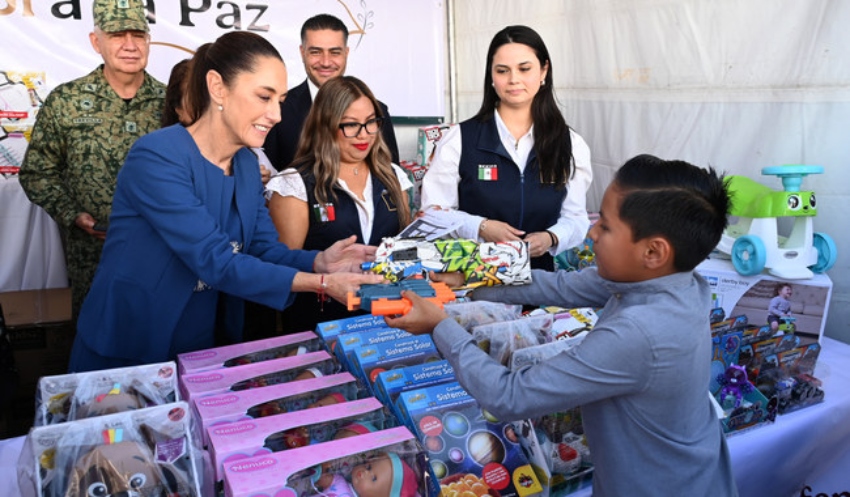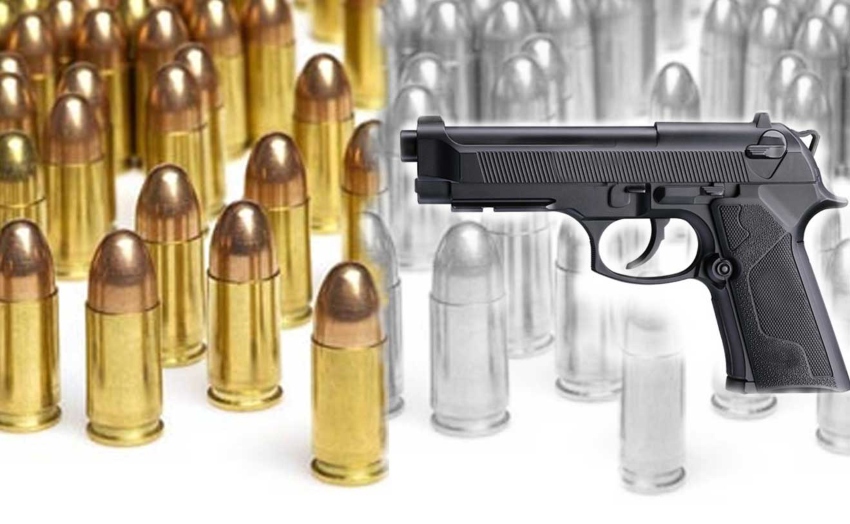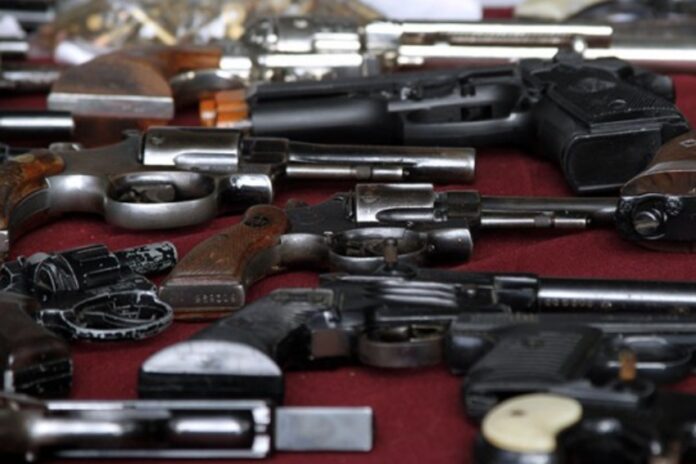In January this year, the Mexican government, in collaboration with the Catholic Church, launched the program Sí al Desarme, Sí a la Paz (Yes to Disarmament, Yes to Peace) to encourage citizens who own firearms to voluntarily and anonymously exchange them for money.
This is the first time the program has been replicated nationwide, having previously run in Mexico City during the time President Claudia Sheinbaum served as head of government.

The program’s goal is to remove guns from households, particularly among civilians, to reduce high-impact crimes, injuries and accidental deaths caused by firearms. It also seeks to promote values, attitudes and behaviors that prevent violence, as well as educate people about the dangers and consequences of possessing or handling weapons, ammunition or explosives in their homes.
Children are also included in the initiative, as the program encourages them to exchange any toy guns for educational and constructive toys instead.
“Guns are a symbol of violence and death. We don’t want any family to have a gun in their home,” declared Sheinbaum, who insisted on addressing the causes of violence in the country from early childhood.
While this is a laudable initiative, there are questions about its efficacy. Over 16 million guns are still circulating in Mexico.
How does the program work?
One of the strongest pillars of the program is its policy of anonymity. Anyone interested in exchanging firearms can do it freely, anonymously, respectfully and without legal consequences. “Identity and collected data will be protected at all times,” the government decree states.
For the collection of firearms, exchange booths are set up in public spaces, often church atriums, to provide a safe and secure space for citizens to surrender their weapons without fear of being investigated or targeted.
Those who turn in weapons are given financial compensation depending on the weapon and its condition. The amounts established by the Ministry of the Interior range from 4,000 to 26,450 pesos (US $200 to US $1,300), depending on the model, caliber and service life of the weapon. Explosives, ammunition or cartridges are also accepted.
President Sheinbaum has allocated a budget of 6 million pesos (US $325,254) for the program. Of that amount, 10% of the total budget corresponds to operating expenses, while 5.4 million pesos is used to fund financial compensation for the exchange of firearms and war-themed toys.
All weapons collected are sent to be destroyed by the National Defense Ministry (Sedena). Some weapons are destroyed on the spot.
How many firearms has the program collected and destroyed?
Official figures show that since the program began in January this year, 5,890 arms have been collected. Meanwhile, 5,169 war toys have been exchanged in activities organized for children and teenagers.
But despite efforts to take firearms out of circulation, the majority of weapons circulating in the country are not in the hands of the general population. Weapons here are usually found in the hands of the Armed Forces or organized crime.
How many firearms are in circulation in Mexico?

According to recent data from the Small Arms Survey, there are an estimated 16 million firearms in Mexico, with the Army typically seizing around 13,000 each year. However, the vast majority of Mexicans do not own a gun.
According to the results of the Second Mexican Survey on Firearm Possession, Use, and Opinion, 96% of respondents stated that no one in their household owned a firearm. Furthermore, a separate survey conducted by the Center for Social Studies and Public Policy (CESOP) revealed that Mexicans lack both legal and cultural incentives to own a firearm. Reasons against ownership cited include child safety, the belief that firearms are dangerous and general opposition to violence and guns.
These results contrast sharply with the fact that nearly 2,000 illegal weapons enter the country every day, making it the country with the sixth-highest number of illegal firearms.
This data is in stark contrast to the United States, where 72% of U.S. citizens say they have fired a gun at some point, four in 10 American adults have a gun at home and 30% report that they personally own at least one firearm.
Earlier this year, the United States government revealed that 74% of the weapons used by Mexican cartels come from the U.S. and enter the country through the northern border with Arizona, California, New Mexico and Texas.
Does the program work?
Back to the original question, is the Sí al Desarme, Sí a la Paz program efficient in eradicating gun violence in Mexico?
It is too soon to answer this question. But given that the vast majority of guns circulating in Mexico are not in the hands of civilians, perhaps this initiative should be combined with other security strategies to achieve a meaningful decline in firearm violence.
Arranca en Tlaquepaque la campaña “Sí al desarme, sí a la paz” https://t.co/qb9CkCIlrY pic.twitter.com/VgVPT0uDdJ
— Rocío Bárcena Molina (@RocioBarcenaM) September 15, 2025
Big changes usually begin with education. Educating citizens about the harm of gun violence is definitely a step in the right direction, even if there is still a long way to go.
Gabriela Solis is a Mexican lawyer turned full-time writer. She was born and raised in Guadalajara and covers business, culture, lifestyle and travel for Mexico News Daily. You can follow her lifestyle blog Dunas y Palmeras.
